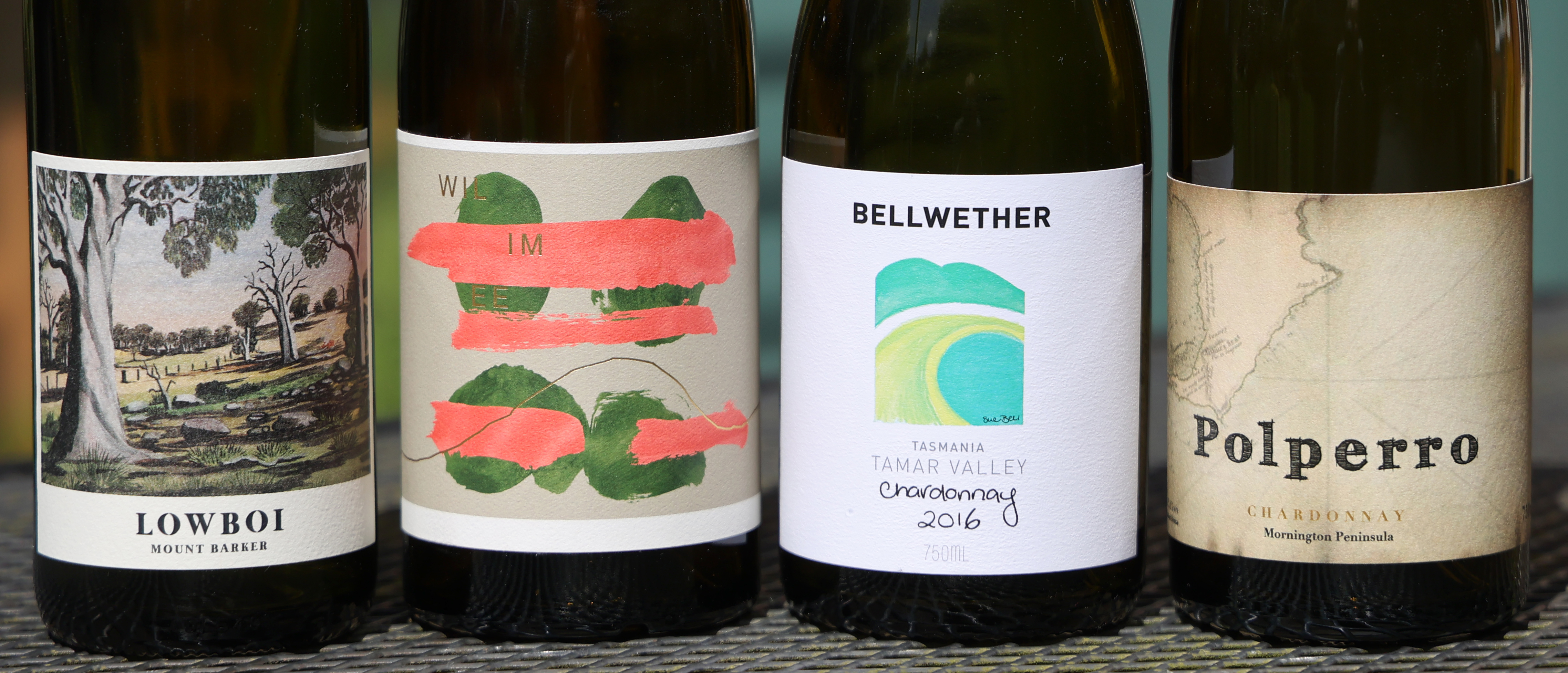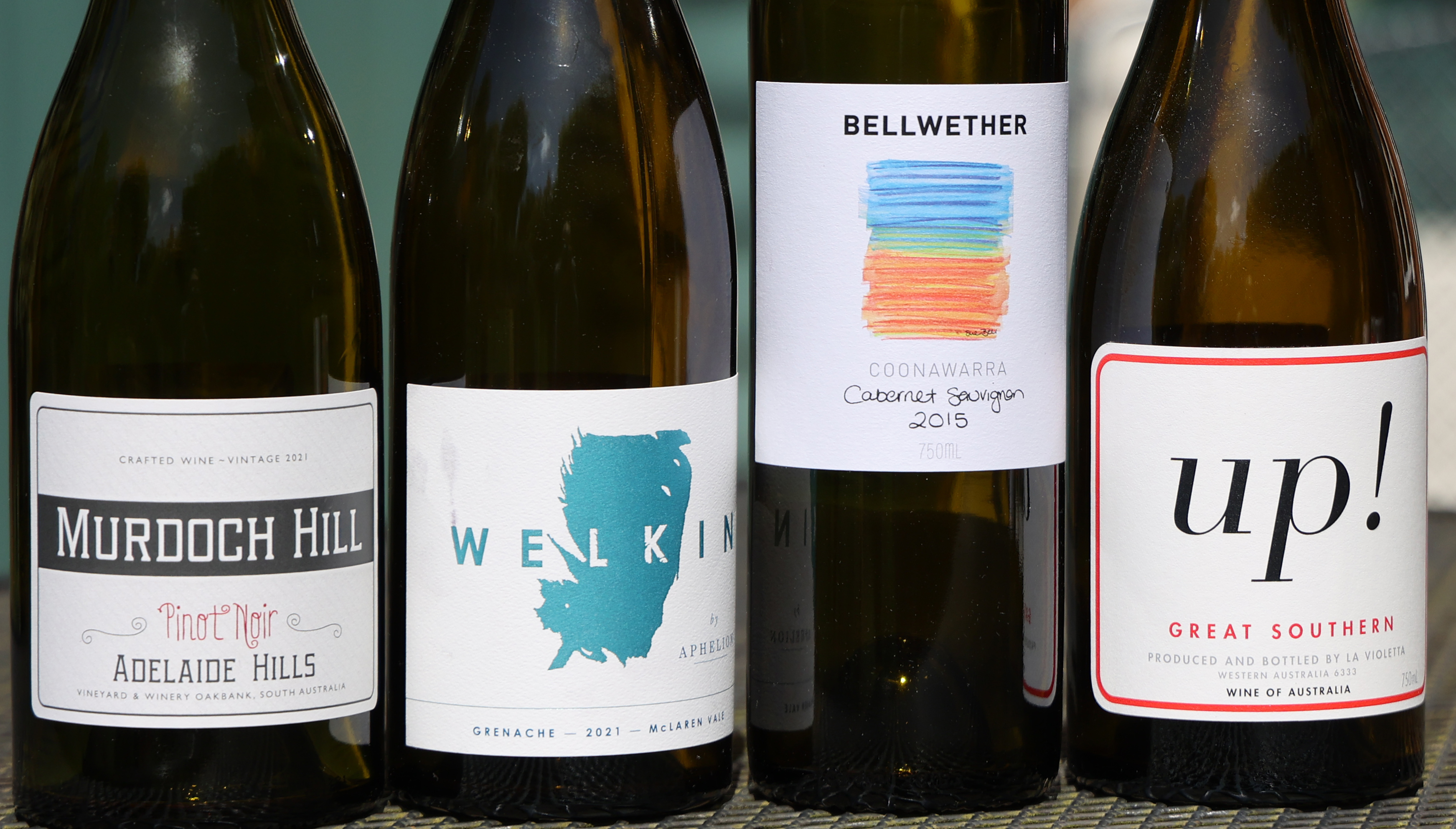 There was a time in the not-so-distant past when high-end Australian wines tended to be over-extracted, over-oaked, and over-high in alcohol. They were wines that reflected on the one hand a hot climate and on the other an apparent need to make a strong and immediate impression. While impressive in principle, they were not easy to drink on their own and not well matched to most food (barbeques excepted).
There was a time in the not-so-distant past when high-end Australian wines tended to be over-extracted, over-oaked, and over-high in alcohol. They were wines that reflected on the one hand a hot climate and on the other an apparent need to make a strong and immediate impression. While impressive in principle, they were not easy to drink on their own and not well matched to most food (barbeques excepted).
Nik Darlington of Pip wines set out to show us that times had changed: grapes were now grown with care in cool areas (for Australia) and their juice was being turned into wine with sensitivity and the careful use of oak. Over the course of an interesting and very enjoyable presentation in which he showed four white and four red wines, he more than made his point and convinced us that the best Australian wines had improved beyond measure over the recent years. He also, as the images show, demonstrated that Australia is a very beautiful place to have a vineyard.
These eight wines were all from impressive wine makers, two of whom (Mike Downer and Rob Mack) had won young Australian winemaker of the year (the Young Gun award) and one (Sue Bell) had been given the best winemaker of the year award – and we were all glad that the tasting included two of her wines. Nik emphasised that, while he loved and was proud of these wines, each had been strongly endorsed by Jancis Robinson, the doyenne of wine tasting in the UK. The comments below reflect several views
Lowboi grüner veltliner 2021 – Porongurup, Western Australia (12.5%, £33.00)
This wine was the first grüner veltliner that Guy Lyons has marketed. Although it is not a common grape in Australia, this Austrian variety is beginning to be grown in cool areas and has the great advantages that, unlike many common varieties such as cabernet sauvignon, its water requirements are light. The wine was pale, cool, slightly acid and, like several other wines in the tasting, improved after 15-20 minutes in the glass. This wine was full and gutsy and would be a lovely glass to have before dinner to give one an appetite. It has some similarities to sauvignon blanc but was longer, richer and fuller than most southern-hemisphere sauvignon blancs and was nearer in feel to those of the Loire. It is clear that the grüner veltliner grape can not only flourish in Australia but make wine that matches the best of those from Austria.

Polperro Chardonnay 2019 – Mornington Peninsular, Victoria (23%, £34.00)
Bellwether Chardonnay 2016 – Tamar Valley, Tasmania (12%, £40.00)
Wilimee Cambrian Chardonnay 2020 – Macedon Ranges, Victoria (12.7%, £55.00)
These three chardonnays, all made in cool areas with limited times in oak, were tasted together so that we could compare the styles of the winemakers and get a feel for how they might age. As there was plenty of time to enjoy them, we could follow their development in the glass.
Initial impressions. The Polperro, a biodynamic wine, was pale, had a classic chardonnay nose and was delicate on the palate. The Bellwether was far bigger and richer (Sue Bell does not release her wines until she feels that they are ready) but had a slight burnt-rubber taste (volatile sulphur?) taste. As to the Wilimee, our table felt that it was very slightly petillant (it was the youngest of the three), but long and developed. In each, the oak was well-integrated, the alcohol was unobtrusive and the tastes well-balanced. They were lovely wines.
After Nik had introduced them and we had tasted them, he asked us to vote for our choice. It was a measure of the quality of the wines that opinions were pretty evenly divided across the three.
Impressions after 20 minutes. All had lengthened and improved. The fruit of the Polperro was clear but balanced with some minerality. The initial odd taste of the Bellwether had gone, leaving a rich intensity, with a touch of acidity that reflected its cool Tasmanian origins and whole-bunch fermentation. The Wilimee had lost its slight prickle and showed lovely fruit. It is worth noting here that, not only is the Wilimee vineyard the coolest in Australia, but probably has the oldest terroir: its Cambrian soil reflects rocks that date back some 500 million years!
All three were delicate, balanced and delicious – classic high-level chardonnay. Nik had initially said that they could match top white Burgundies and he was proved right. I felt that the Bellwether really was the wine for now but there was no reason to suppose that the others would not improve over time.

Murdoch Hill Pinot Noir 2021 – Adelaide Hills, South Australia (13%, £29.00)
This very young wine made by Mike Downer was full, vinous and showed the typical dark pink colour of classical pinot noir. Some people loved it, while others felt that that it was nothing like ready to drink as the dense layers of taste were muddied together and unresolved. My own view was that this pinot noir this will be a pleasure to drink in a few years and that it was the one wine of the evening that needed to be laid down.
Aphelion Welkin Grenache 2021 – McLaren Vale, South Australia (14.5%, £24.50)
A theme of Nik’s talk was that Australian best winemakers are keen to experiment, both with grapes and vinification and that they are particularly aiming to match grapes to terroir. As much of Australia is hot, it has always made sense to grow grapes that flourish under such conditions such as shiraz (below), which is almost a staple in Australia, and, more recently, grenache.
The Aphelion grenache, made by Rob Mack, had lots of perfumed fruit and is clearly a wine for drinking now, even though it only was vinified last year using a mix of whole-bunch fermentation and carbonic maceration. The result is a fresh wine the characteristic raspberry, cherry and spice flavours of grenache and with limited tannins. As Manfred Krankl of Sine Qua Non wines (California) commented “Grenache delivers what Pinot Noir promises”, although I hope that he meant to add “in the short term”. This is a warm-weather wine and I feel that it would show best if served slightly cool (old-fashioned cellar temperature).
Bellwether Cabernet Sauvignon 2015 – Coonawarra, South Australia (13%, £42.00)
This was a stunning cabernet from Coonawarra. Nik emphasised again that Sue Bell does not sell her wines until they are ready to drink, and this, her current release, was a joy to drink. It had wonderful fresh, full cabernet flavours that had elements of blackcurrant and a dash of eucalyptus (from the local trees). The notes from Jancis Robinson said that it was relatively light-bodied, but it showed as full and strong – it would be an ideal accompaniment for any tasty meat dish. Indeed, I am not sure that any food would require a fuller-bodied cabernet. Nik made the point that, although some Australian winemakers were beginning to think about matching grapes to terroir, Coonawarra cabernets were and always had been defined by their iron-rich soil. It was, for me, the wine of the evening.
La Violetta Up! Shiraz 2018 – Great Southern, Western Australia (14.2%, £39.00)
Andrew Hoadley makes this biodynamic wine with grapes from three well-sited vineyards in the “spice belt” south of Mt Barker in Western Australia. La Violetta is the name of the estate and “Up!” is the name of the wine; it is, says Andrew’s website, a suffix commonly found in local place names that means “place of” in the indigenous Noongar dialect. This wine is made to evoke the ancient granitic soils of the vineyard.
Although the bottle is labelled as shiraz, Nik emphasized that its style is more typical of the Northern Rhone than Western Australia, although I couldn’t taste the expected pepperiness that characterizes the best French syrah. This full tasty wine had fruit that was more red than black, balanced tannins and an intense nose. While this could be enjoyed with any meat, it would particularly enhance a serious barbeque, particularly if served at cellar temperature to soften the feel of the alcohol.
What did we learn from the evening? First: top Australian wine makers now make lovely wines that are balanced, mature relatively rapidly and are a joy to drink. Second: the winemakers are becoming much more deliberate in choosing grapes that not only match the terroir but that mesh with the effects of climate change, particularly the diminishing amounts of rainfall. What do we hope will happen? With luck, winemakers who provide standard rather than high-end wines will absorb the lessons of the latters’ success and make better wines that we can all enjoy regularly.
The Club sets out to provide its members with enjoyable and even memorable evenings during which we can enjoy wine and learn a little more. This evening was one of the best: a superb speaker who was rightly proud of the wines he was making available, interesting material on how a major area of wine production is upgrading its viniculture and, of course, delicious wines to taste. Those who weren’t there should have been!
Jonathan Bard